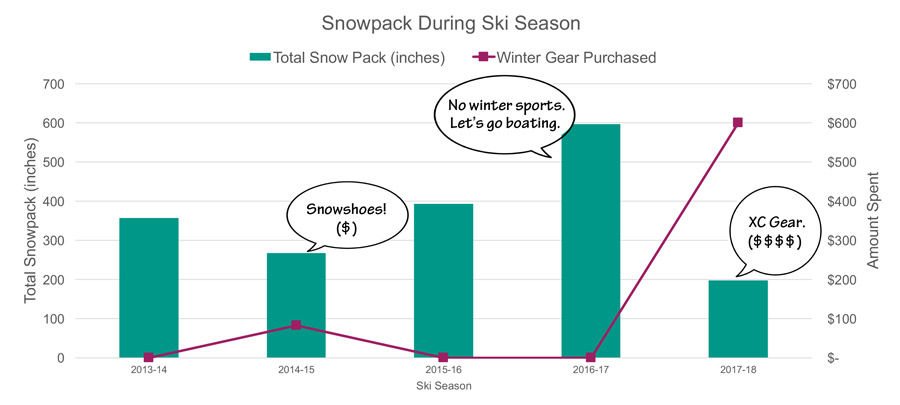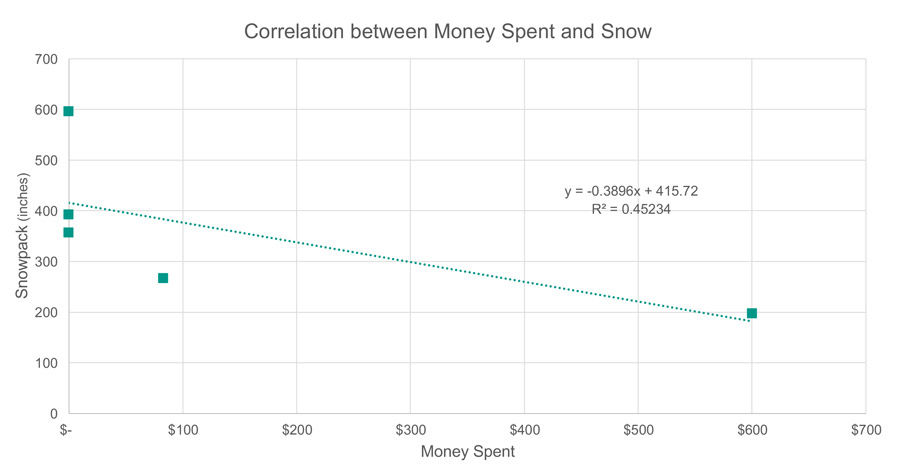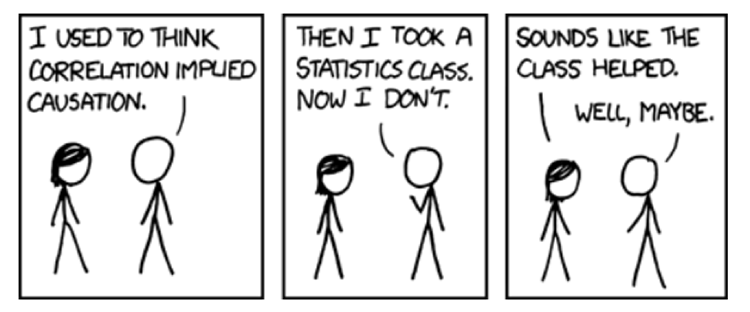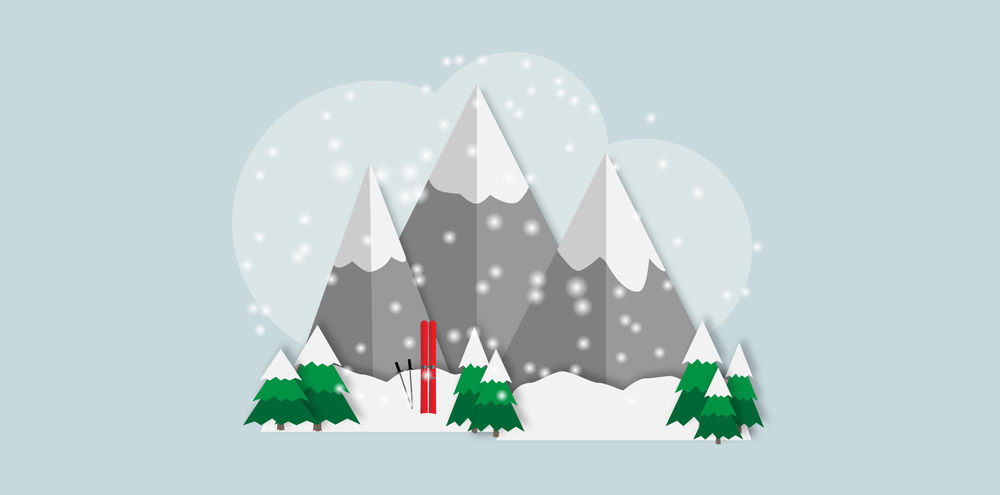BIG IDEA:
In health care, we ’re confronted by an avalanche of data. It's important to remember that correlation does not imply causation.
hat’s a ski season with no snow? One word: sad. I’ve never been a big winter sports person. I’m always growing my involvement in spring, summer, and fall activities, but those seasonal calendars have become so overwhelmed that I’ve had to expand into winter. In doing so, I think I might be to blame for Utah’s lack of snow. How? I made my first big purchase of cross-country ski equipment in November 2017. Looking back, I made a smaller purchase of snowshoes in November 2014. I felt like a trend of lower snowpack developed along with my purchases, so I decided to graph it:

I see a trend! I made purchases in 2014/15 and 2017/18, when snowpack was low. Conversely, the snowpack in 2016/2017 was awesome—and that was the season I swore off snow but took up boating.
It appears that a correlation exists:

The more I spend, the less snow there is.
Three steps to decide if correlation implies causation
I presented this cause and effect relationship to resident ski and stats guru Will NcNett, and in not so many words he told me I was wrong. Here are the three steps Will used to decide if correlation implies causation:
- Look for a relationship in the data: Is one variable dependent on the other? Is there correlation?
- Explain the relationship: Does the cause come before the effect?
- Try to validate the explanation: Validate the explanation with a controlled or observational study (the most effective way) by ruling out other alternative explanations.
Will and I looked over my data, and here’s why I shouldn’t blame myself (and my cross-country ski purchase) for this winter’s lackluster snowfall:
- Although there is a correlation between ski purchases, the correlation is not very strong (R2 = .45)
- My purchases occur in November, before the ski season. But another factor influenced my decision to make the purchase: snowpack from the year before. My November purchase was influenced by the previous year’s overall snowpack (in behavioral economics, this is called recency bias - thanks, KBJ!)
In health care, we’re confronted by an avalanche of data, much of which shows a correlation and allows us to jump to a cause and effect conclusion without looking at other factors that might not be as obvious. At work and in our private lives, it can help to take a break and assess the real link between correlation and causation.
Having an outside perspective (thanks, Will!) can challenge our cause and effect thoughts on the root of the problem and lead us to a different conclusion—perhaps even addressing the issue that caused us to look at the data in the first place.
In the meantime, I feel a little bit better about my purchase, and I’ll continue to wish for snow. Until it arrives, you can find me in the canyons.

Cindy Spangler
Using improvement methodology to solve one piece of America’s opioid epidemic. Dr. Sean Stokes and team used the practice of scoping to focus on one population and one procedure to achieve manageable, measurable improvement.
Delivering a great health care experience is only possible with one crucial component: reliable scheduling. It’s such an essential part of efficient operations, in fact, that the University of Utah Health created an access optimization team to help providers across the system.
Dr. Kyle Bradford Jones examines the Netflix algorithm for user preference as a model for developing provider selection tools that match patient values with their care needs.
